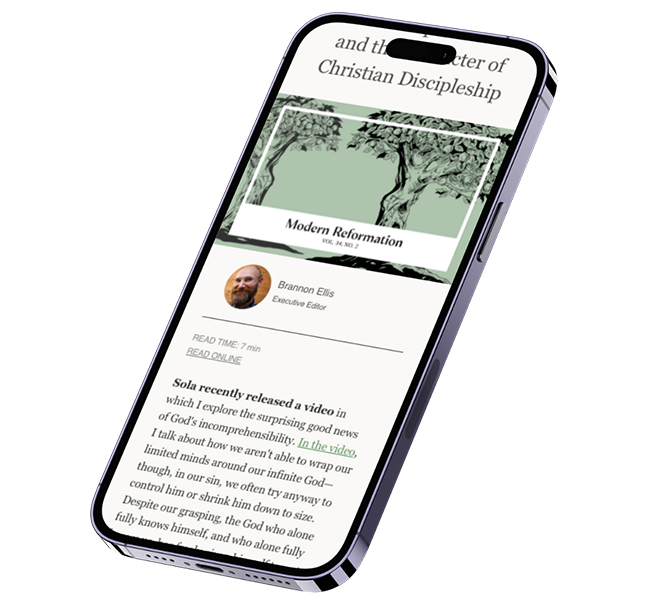Keep Up Your Biblical Greek in Two Minutes a Day: Volume 1 / Volume 2
Keep Up Your Biblical Hebrew in Two Minutes a Day: Volume 1 / Volume 2
by Jonathan G. Kline
Hendrickson, 2017
370 pages each (hardcover), $39.95 each
When I turned forty years old, I crested the hill of my physical prime and immediately began to perceive my own sure-but-steady decline. My eyes began to be more sensitive to light—I need my sunglasses outside in the day and my LED reading lamp by night—and I began to notice a growing bulge in my midsection, commonly referred to in the broader culture as the “dad bod” phenomenon. My kids, now in their teens, tease me for my growing tummy and jeeringly accuse me of wearing a dorky fanny pack under my shirt. Adding insult to injury, my hairline retreated a half-inch on my birthday. So much for the prime of life!
With failing eyes and my fight-weight athleticism long gone, it is no surprise that some of my mental acuity is draining out of my head as well. It has been a long time since I parsed Greek verbs in my undergraduate and graduate study programs; and while my Greek New Testament is still mostly comprehensible, I find myself needing a few more helps these days just to keep up.
Enter Jonathan G. Kline and his Two Minutes a Day Biblical Language series, which includes Greek, Hebrew, and Aramaic. My gut reaction (no pun intended) was that nothing works that well in just a couple of minutes per day. But I skeptically hit “buy” on Amazon and purchased both the Greek and the Hebrew editions. While there are two volumes for Greek and two for Hebrew (one for Aramaic), I decided to start modestly and tackle just the first volume of the Greek and Hebrew books. After all, I was already committing to four minutes a day if I worked on both languages!
The volumes are well designed both physically in terms of form and layout, and structurally in terms of content and approach. As physical books, these items are beautiful—they are sewn instead of glued, and the paper is white and thick, making them very readable and pleasant to handle. The Greek and Hebrew fonts are highly intelligible, which (believe it or not) is not a given in many ancient language texts and grammars. (If the Greek and Hebrew fonts were less readable, I probably wouldn’t have lasted long in this program, no matter how practically the books were designed!) As icing on the cake, the books are covered in soft, real leather; all of which suggests that these volumes are built for regular use and for duration over the years.
Each day’s lesson provides a similar study structure as follows: first, a key verse is given in a modern English language translation. The translation may be the NASB, ESV, NIV, NRSV, or still another. Within the English verse, a key vocabulary term is given in parentheses in the original language. These words highlighted in bold become the vocabulary refresher terms for the day. Below the daily verse, the new word is given a definition, a transliteration (in case your pronunciation needs refreshing too), and a few key statistics, such as how many times the word is used. Key vocabulary words are given in the order of their numeric usage in the Bible, so the most important and common words are given primacy.
Second, a couple of other key words from previous days are highlighted to refresh what you recently went over in prior weeks. For instance, on Day 47 the new key word is pneuma (spirit), and the review words are hemera (day) and polus (many) from Day 46 and Day 45 respectively. In this way, basic vocabulary of the important Greek and Hebrew words is rehearsed meaningfully and in order of descending use.
Third, the same verse of the day is now rendered entirely in the original language. This is the tough part, when students are given their first crack at translating the whole verse alone with minimal helps. White space is plentiful on the page, so you can make your own rough go of it in pencil in the margins. The day’s key words are in bold here too, so students can see them in the text. That way, they have at least a couple of big hints when translating the text independently.
Most of the verses for translation are well selected for two reasons. First, they are devotional. Verses for each day were wisely chosen, not only as good translation samples but also for spiritual formation. I found it helpful to use them for prayer and meditation, as well as for intellectual exercise. Second, they represent clear, accessible sentences (manageable in grammar and structure) that are not overly complicated or riddled with hapax legomenon (obscure words used only once).
Okay, so you tried to translate the verse now without helps and managed well enough, but you couldn’t quite get through a few of the tougher phrases. No problem. That’s why Kline provides the fourth and final section, which is a parallel translation of the key verse broken down clause by clause. Here, we see how the verse should have been translated, had we been as sharp as we were in our second year of seminary. I find this part to be a helpful refresher and a general encouragement: We still know more than we think we do!
If readers feel confident and ambitious and choose to do more, they can certainly go further than minimally required. Several times, I chose to transition from the daily exercise to my Greek Testament itself to read more of the broader context of my daily key verse. In this way, I could easily go deeper into reading the original-language Bibles themselves—which is, after all, the main goal. Each volume contains 365 lessons, one per day; and so by the end of the year, students will have worked through the 365 most-commonly used words in the Greek or Hebrew (or Aramaic). After that, the second volumes in the Greek and Hebrew series pick up with the 366th most-commonly used word and the key vocabulary becomes more difficult as it continues.
At this point, I should admit that the books cannot and will not be a good substitute for a Greek or Hebrew (or Aramaic) grammar. They make no intention of teaching the language with all of its tenses, aspects, and conjugations. These books will disappoint those who acquire them hoping to learn the languages from scratch. If they do have a downside, it is that they do not make any attempt to explain rules of grammar or untangle confusing idioms. On the contrary, they are what they say they are: merely for “keeping up.” So can the books do what they promise—maintain our language skills in just two minutes a day? I believe they can, assuming we learned the languages well enough in the first place. If used as directed, two minutes per day is all these linguistic devotions really require from our busy lives to help us stay sharp.
Refreshing my language skills is so easy, I just might invest in “8 Minute Abs” next.
Matthew Everhard is senior pastor of Faith Evangelical Presbyterian Church (EPC) in Brooksville, Florida, and a graduate of RTS Orlando. His doctoral dissertation was recently published as A Theology of Joy: Jonathan Edwards and Eternal Happiness in the Holy Trinity (JESociety Press, 2019).







